Japan has a rich storytelling tradition, a big part of which is horror. And that tradition feeds directly into film. That means Japan's horror cinema is amazing…if you know the right films to watch.
We here at Tofugu have compiled the definitive list of the best Japanese horror films of all time. Three of us (Rich, Kaitlin, and Michael) teamed up to watch movies and write reviews. This article is the fruit of our terror-labor.
If you're looking for the absolute best and scariest Japanese horror movies out there, look no further. It doesn't get better than this.
13. Battle Royale (2000)

In a dystopian future, Japan is a police state that rounds up one high school class a year and forces the students to kill each other. The film primarily follows a pair of students, Shuya and Noriko, but also jumps around to other groups of kids (at least the ones who survive the first act), weaving subplots and characters into a cohesive story that mixes teenage melodrama and war-like violence.
The horror comes from the over-the-top deaths caused by bullets, crossbows, axes, and neck explosions. It’s like a teen slasher film with 42 teens, all of them doing the slashing. But unlike teen slasher movies, the characters and their relationships are surprisingly deep. Sure, there are weak characters and flimsy plot points, but for a movie about kids killing each other, there’s a lot going on. This could have easily been a cheap exploitation flick. Instead we get themes like adult fear of youth and the cruelty of adolescence. There’s even solid character interaction and memorable performances, especially from film buff heartthrob Takeshi Kitano.
Though far from a perfect film, there’s a lot to love here. If you’re over The Hunger Games and looking for a grittier, more complex (and more fun!) teen murder romp, give Battle Royale a try.
- Michael
Where to watch: Amazon
12. Jigoku (1960)
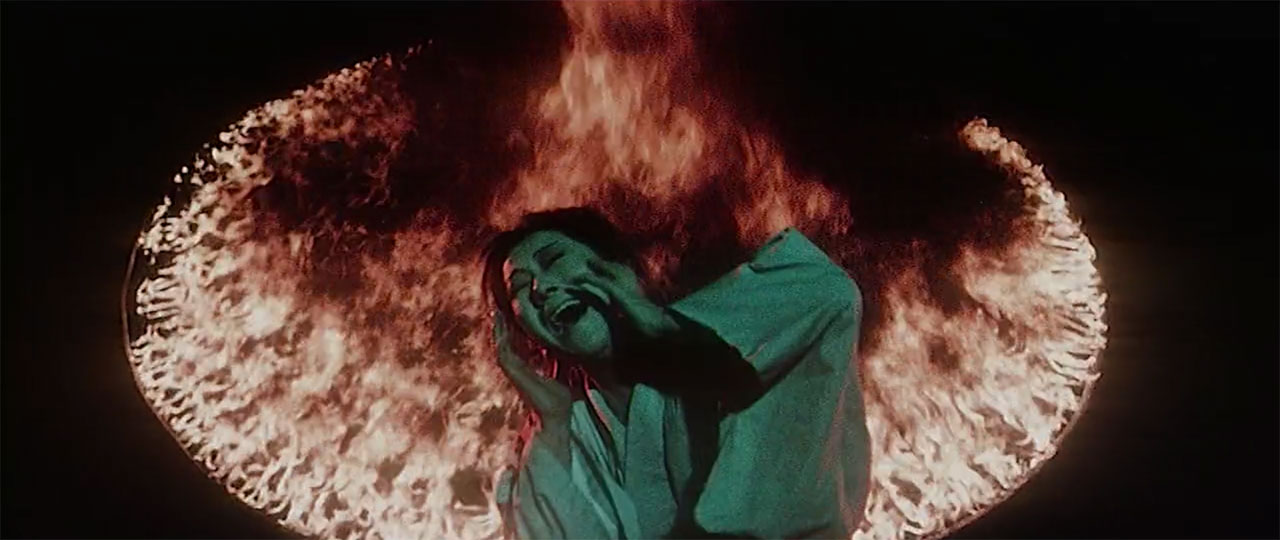
Jigoku tells the story of Shiro, a theology student who falls into one misfortune after another. Without giving anything away, there’s murder, sex, thievery, death, suicide, negligence, car accidents, and dishonesty all tied up in a twisted cast of characters that Shiro has to deal with.
The story unfolds as a straightforward crime drama until one hour in, when (spoiler alert) everybody dies. And that’s where the real horror begins.
Shiro and his frenemies find themselves in Jigoku (Japanese Hell), facing demons and torture for the remainder of the film. And it’s not a quick sequence either. It’s 40 damn minutes of blood, fire, and screaming. Think Dante’s Inferno in a Japanese setting. And for those not familiar with the Buddhist idea of hell, this is a great introduction.
Though the most memorable sequences are the colorful, effects-heavy torture scenes, the most poignant are the slow quiet ones. As Shiro journeys through the underworld, he encounters his family members, friends, and people he’s wronged. He’s faced with regret and the secrets his loved ones have been hiding. It’s poetically uncomfortable.
Jigoku is a strange beast. It can be slow and confusing at times, and you’re forced to wait for the promised Hell scenes. It’s basically a crime story that doesn’t end when the villains die. But if you take the time to sit with this movie, you’ll find deeper themes of conscience, regret, fate, and redemption.
- Michael
Where to watch: Amazon
11. A Page of Madness (1926)
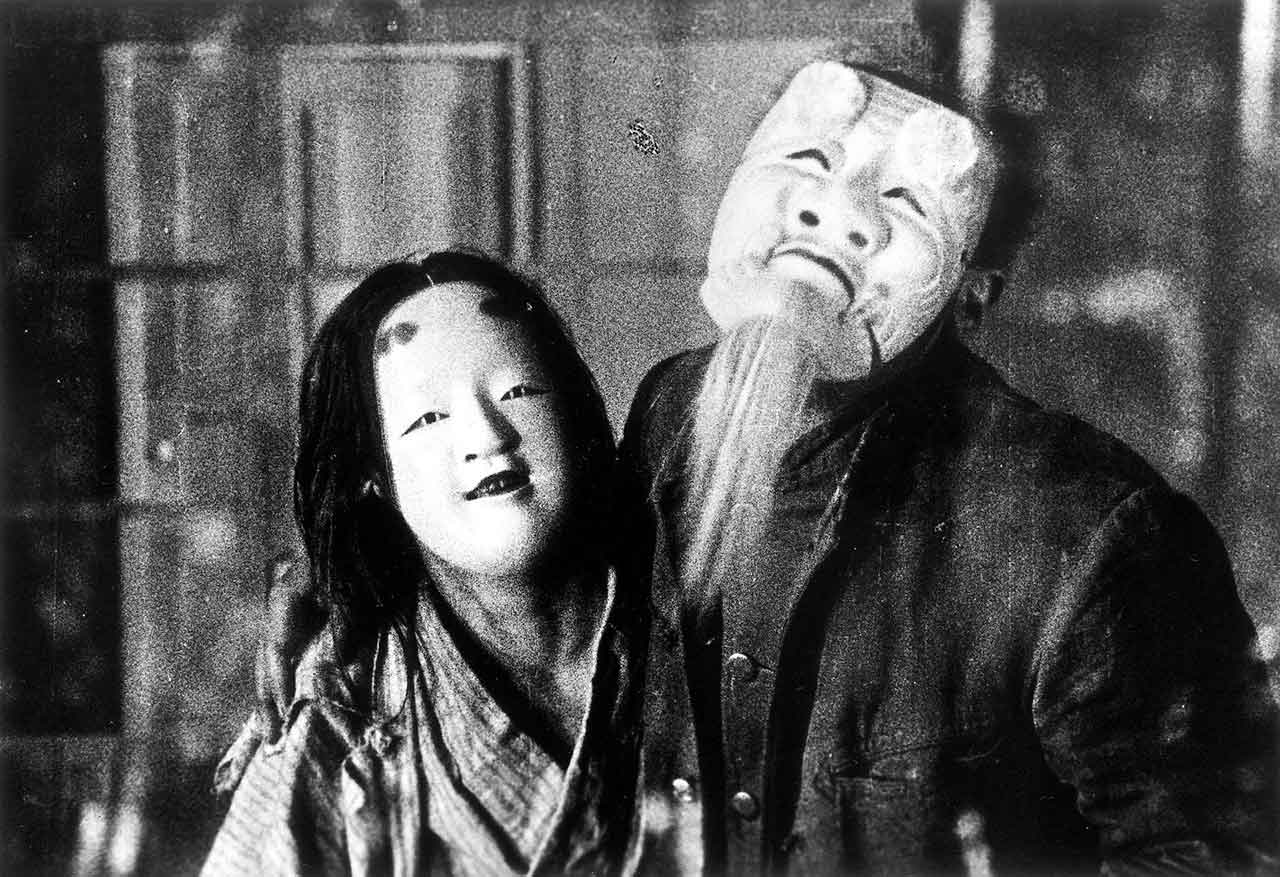
A silent film from the 1920s may not be something you’d expect from this list. But A Page of Madness succeeds in creating an experience that favors imagery and film technique over story.
A Page of Madness follows a janitor at an insane asylum who takes the job to try and free his imprisoned wife. None of this is immediately apparent though.
Japanese films from the silent era were accompanied by benshi 弁士, narrators who not only explained the story with dialogue and exposition, but also provided their own interpretation of the film. Without narration or inter-titles, you’re left to piece together the story yourself. On top of this, the film focuses on imagery and atmosphere, so the story can get a little confusing.
The story itself isn’t particularly horrifying, but the imagery, editing, and furious pace really pulls you into the world of the asylum.
The cinematography is rich and varied. Shots are framed with shadows in mind. The editing is sometimes frantic, sometimes uncomfortably slow. Camera movements whip, push in, and pull your perspective all over the rooms filled with white walls and metal bars.
Silent experimental films aren’t for everybody. But if you take the time to sit and watch (it’s only an hour), you’ll likely find yourself drawn into the world of asylum and all the madness that comes with it.
- Michael
Where to watch: YouTube
10. Noroi: The Curse (2005)

I wasn't sure about The Curse at first. Trailer clips of low-fi VHS footage revealed a documentary-style horror film – an idea I thought had been done to death. But The Curse proved my intuition wrong; the film's clever mix of media formats creates a riveting narrative, a very Japanese take on the genre, and a freaky addition to the horror genre.
The Curse gets off to a quick start. When paranormal investigator Masafumi Kobayashi shows up to a small town to explore rumors of strange noises in the neighborhood, he uncovers a strange web of psychic prodigies, "ectoplasmic worms," near-forgotten ancient rituals, disappearances, and deaths. "No matter how terrifying, I want the truth," Kobayashi declares.
Kobayashi's investigation proves to be The Curse's greatest strength. Instead of a tired narrative, we are treated to a documentary incorporating interviews, television show footage, and Kobayashi's own hands-on research. This media mix, along with Japanese television tropes, crafts an authentic "Japanese" atmosphere. Add believable characters and Japanese cultural points (like cleansing rituals) and you are left with a quintessential Japanese horror experience.
The VHS footage, which was initially off-putting, ended up being one of the film's strengths. The grainy, lo-fi visuals worked with claustrophobic cinematography to create a creepy and intense visual style. Unlike the clean, filtered visuals usually seen in movies, The Curse's footage looked gritty and real. Handheld camera, found footage, and obstructed perspectives made The Curse one of the most intense and disturbing movies I've ever seen.
At just over two hours, The Curse has a long running time, but never feels dull. Kobayashi's captivating investigation, coupled with the film's crafty media mix, weaved a freaky horror tale that hooked me from start to finish.
- Rich
Where to watch: YouTube (for now)
9. Ju-On: The Grudge (2003)
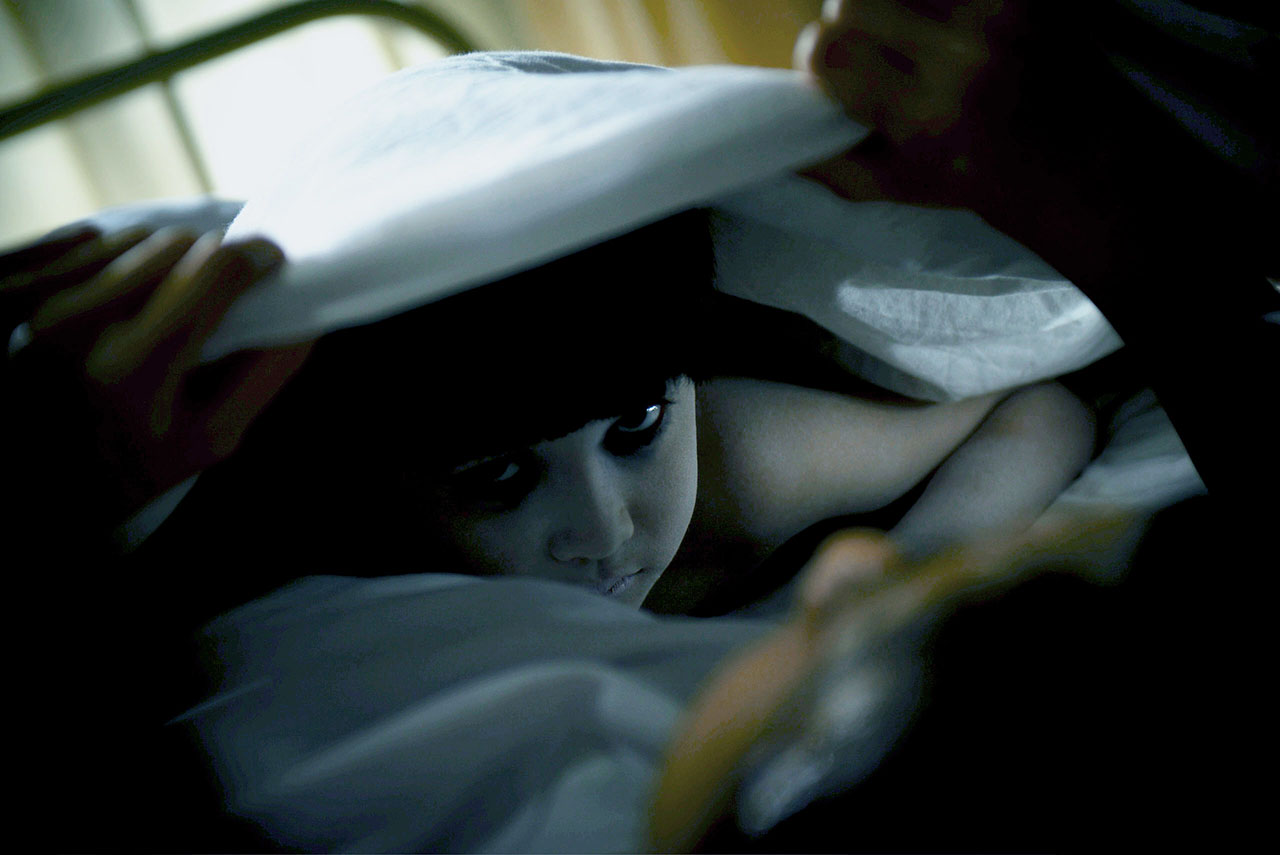
Hot on the heels of Ringu, Ju-On: The Grudge stoked the fires of the early 2000s J-Horror wave. Released in 2002, Ju-On: The Grudge was actually the third installment in the series. Ju-On: The Curse and Ju-On: The Curse 2 were both straight-to-video releases that gained enough traction to birth a third film, released in theaters.
Ju-On: The Grudge revolves around the ghosts of a woman and her son who were killed by their husband/father. Having died with a grudge in their hearts, they haunt and kill all who come in contact with their house.
What sets this apart from the usual ghost house formula is that the curse is contagious. If you enter the house, you're cursed. If you come in contact with a cursed person, you're cursed. And once you're cursed it's only a matter of time until the ghosts find and kill you. It's a nice twist on the formula that removes the "escape from house" option from the equation.
But what really makes this one scary is the sound design and make-up. The painted-white look of the ghosts is so simple it's genius. Yet it's so effectively creepy (I get chills every time I see the kid from this movie). And the sound from Kayako (the ghost wife) is spine-tingling.
The film's not without its flaws though. Its episodic nature means you don't get to spend much time with any given character. A chapter starts, you meet the new victim, and they're dead in time for the next chapter to begin. Great for little slices of scare. But the film as a whole lacks any building sense of dread.
If you've seen a lot of Japanese horror movies from this era, you might find Ju-On too familiar to be truly surprising. But if you're new, give it a try. It's got a lot of fun thrills for the uninitiated.
- Michael
Where to watch: Amazon
8. Dark Water (2002)
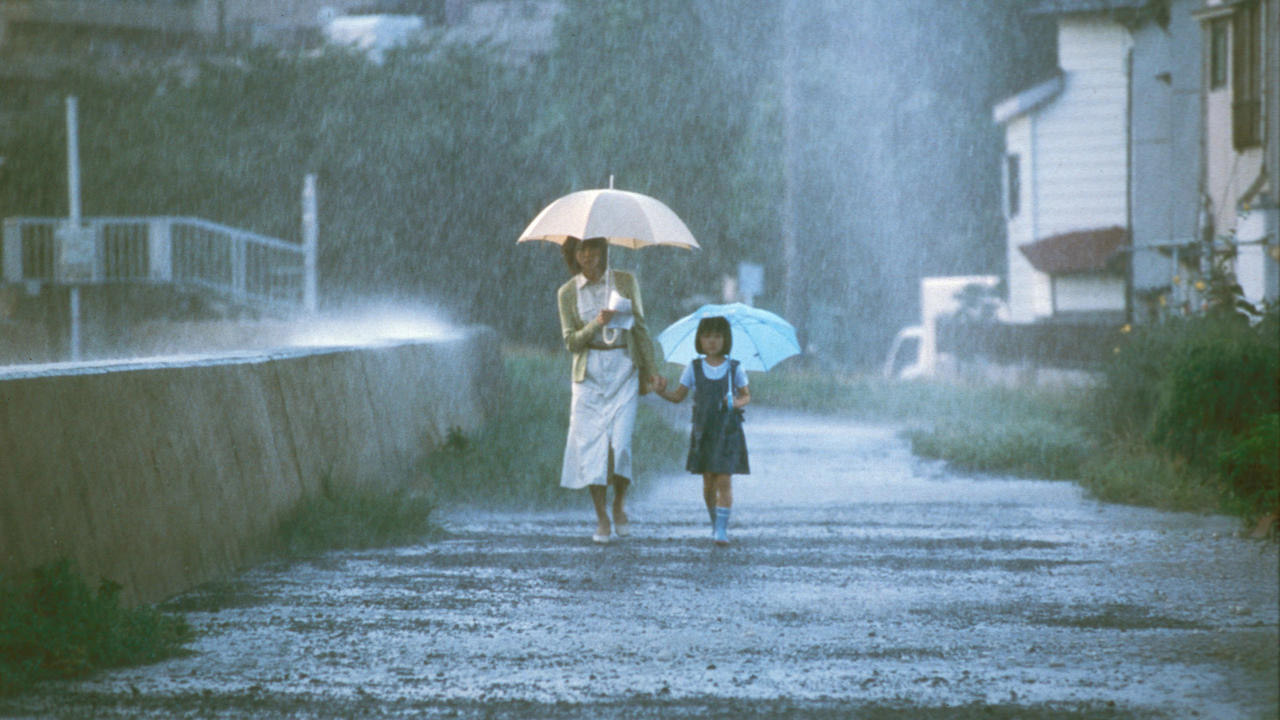
This is the first horror movie that made me cry actual human tears. Dark Water is similar to Ringu in that it's also based on a Koji Suzuki story, directed by Hideo Nakata, and features a single mother as its protagonist. But unlike Ringu, this film is much more concerned with the emotional and domestic struggles of its main character.
When the film opens, our heroine, Yoshimi, is in the midst of a divorce and is fighting for full custody of her daughter, Ikuko. She's had "psychological episodes" in the past, and is under a lot of pressure to prove herself a competent guardian. This means finding a full-time job and an apartment. Unfortunately, Yoshimi ends up renting a place with a few disturbing quirks, like water dripping from the ceiling, locks of black hair pouring from the sink, and oh yeah, a murderous child ghost haunting its hallways.
Although Dark Water suffers from a few horror movie-logic flaws (we never see any other apartment tenants, for example, and the building manager is weirdly indifferent about water dripping into a unit), it does give both Yoshimi and Ikuko a lot of quiet, beautiful moments together. I was particularly touched when Yoshimi is late picking up Ikuko from kindergarten and Ikuko's father picks her up instead. Yoshimi catches the two en route, and Ikuko ultimately decides to follow her mother home, telling Yoshimi she would always choose her first.
Dark Water definitely has its scary, disturbing moments, particularly in the last third of the movie when everything comes to a head and the ghost makes its vengeful desires a horrible reality. And the ending also took me by complete surprise. This horror movie has a lot of hallmarks of its genre, but goes beyond the typical vengeful ghost story and says a lot about the struggles of motherhood, particularly single motherhood. If you like your Japanese horror movies with a lot of heart and genuine characters, look no further than Dark Water.
- Kaitlin
Where to watch: Amazon
7. Tetsuo: The Iron Man (1989)

I'm not sure what I just watched. Tetsuo the Iron Man is loud, graphic, nauseating, captivating and, for me, the most horrifying film on this list. Like the protagonist's girlfriend, I started out thinking, "nothing bothers me." We were both mistaken.
Tetsuo the Iron Man depicts a salaryman's graphic transformation into a metallic swamp thing on copious amounts of viagra; all part of the craziest revenge/world domination plot ever devised. More an experience than a movie, it's better not to ask questions and soak in the kinetic horror.
Better than a review, this film deserves a warning - Tetsuo the Iron Man is not for the weak of heart. The use of stop motion effects creates some of the most organic and disturbing imagery I have seen on screen. Potential viewers should be warned of the graphic sex scenes and "nudity" that take place after the main character's entire body (wink, wink) begins to transform.
Artsy, experimental, and low budget - some may question Tetsuo's legitimacy as a "horror" movie. But its major theme - losing control of one's body and health - is one of the truest horrors we can face as humans. Add graphic, grotesque imagery and it'd be a mistake to not include Tetsuo the Iron Man in a discussion of Japan's best horror films.
- Rich
Where to watch: Amazon
6. Hausu (1977)
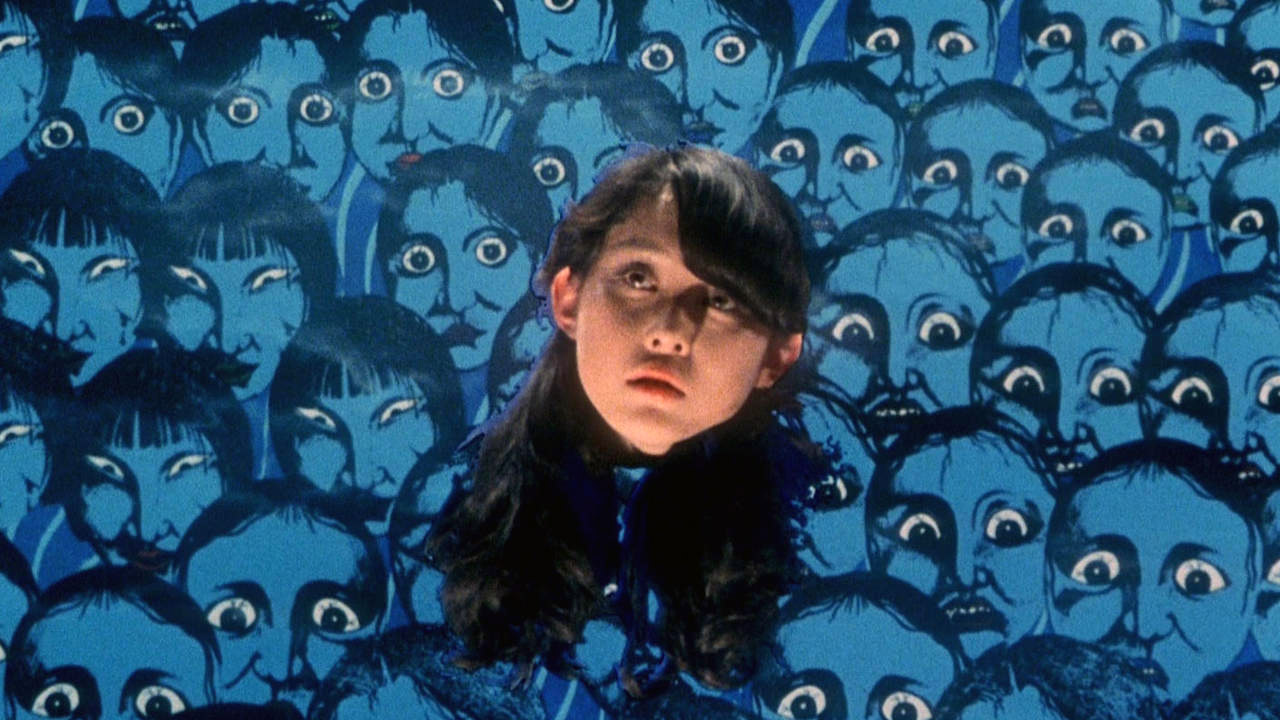
When Hausu was released in Japan in 1977, it was a total flop. When Criterion released it to western audiences in 2010, critics gushed with love.
- "No single adjective or even a pileup does justice to 'House.'"
- "Movies as original as this one don't come along very often."
- "It's like nothing you've every seen…"
Hausu is truly something special. But most glowing reviews miss the point of its greatness. They focus on the "wacky" and "outrageous" rather than things that make Hausu a unique film.
And what are those things? We'll get to that. But first, a little backstory.
Director Nobuhiko Obayashi was a prominent advertising director in Japan in the 1970s. Toho approached him after the success of Jaws, asking him to create something similar that would capitalize on its success. Rather than make a killer shark movie, he went to his grade school daughter, Chigumi, for ideas. He asked her what she was afraid of. Loud clocks, falling futon, pianos cutting off fingers, and fluffy cats all went from the young girl's brain and into the script.
This is what makes Hausu great. It's an absolutely childish horror movie. So much so that the characters are one-dimensional (their names even indicate their behavior). But it all plays into the experience. Watching Hausu as an adult means you're forced to think like a child and find scary the things children find scary. This makes for gory fun when the piano starts dismembering people, blood gushing out its sides.
Sometimes Hausu's blend of silliness and gore is perfect. Other times not so much. But despite the film's imperfection, it works because it's authentic. Though people in 2010 praised Hausu for its "wackiness," I think affection for the film comes from its authenticity. Hausu knows exactly what it wants to be and goes for it full force. Combine that with a childlike perspective and you've got a film worth falling in love with.
- Michael
Where to watch: Amazon
5. Ringu (1998)
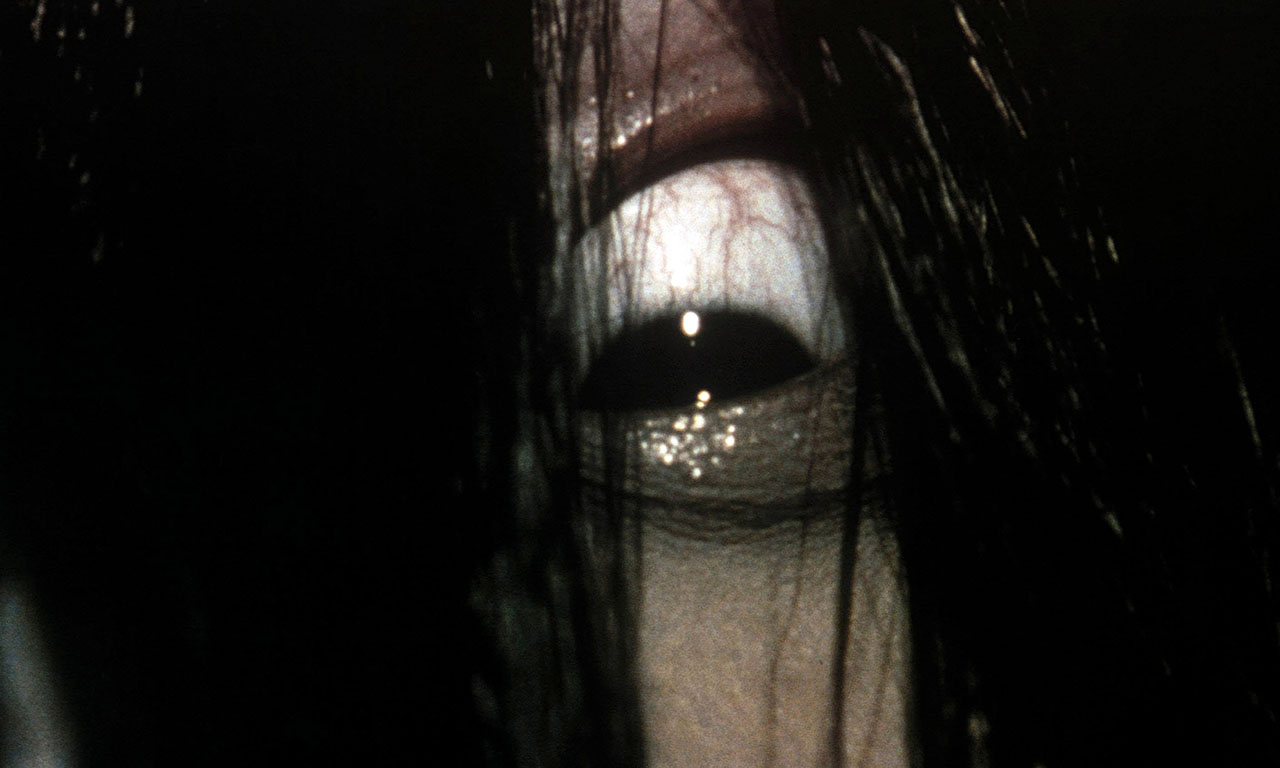
If you want to trace the trend of Western remakes (and general obsession with) Japanese horror movies, Ringu is your patient zero. Based on a TV movie that's based on a Koji Suzuki novel, Ringu was released in Japan in 1998. Five years later, it was remade for American audiences as The Ring, which paved the way for more sequels.
Ringu opens with two giggly high school girls studying at home. One girl tells the other (and the audience) about a mysterious VHS tape that, when watched, dooms the viewer to die in one week. Unfortunately, the other girl already watched the video, exactly one week ago.
Although Ringu sets itself up as an urban legend, it's a traditional Japanese ghost story at its core. Sadako is a classic vengeful yurei, scaring her victims to death. She has a backstory and appearance (long, black hair and white clothing) typical of the yurei tradition. (Her disturbing gait, however, was influenced by a Japanese dance style called Butoh.)
In a gender reversal from the source material, Ringu's protagonist is Reiko Asakawa, a determined journalist and single mother. As she becomes entangled in the mysteries of the cursed video, she begins neglecting her son more and more. This leads to an interesting struggle of work and motherhood. Ringu actually has a lot to say about gender, particularly in how women navigate and survive – or don't – within patriarchal societies.
But beyond Ringu's cultural impact and compelling social messages, it's worth watching because it is damn scary. It's been a really, really long time since I've watched a movie through my fingers, but rewatching Ringu alone at night had me cowering on my couch. At least VHS tapes aren't a thing anymore, so we're totally safe from Sadako… right?
- Kaitlin
Where to watch: Amazon
4. Audition (1999)

The first Takeshi Miike film to gain traction in the West, Audition gave its audiences a view into what the director would become (in)famous for - unapologetic, often twisted films accented by their brutal violence.
Audition's story starts off ordinarily enough; widowed Shigeharu Aoyama is lonely and looking to find new love. When he jokes about needing an easy way to survey women, Aoyama's friend suggests holding a fake movie audition to find the perfect candidate. Aoyama could pick the girl he liked best, then meet her to say (unfortunately) the movie lost funding. And romance ensues. What could go wrong?
A large portion of the movie feels like a romantic drama and the crafty buildup left me feeling for our protagonist. Despite his deception, Aoyama never has evil intent. But evil comes his way. Though everything seems normal at first, we eventually see Aoyama's love interest isn't the sweet angel he is hoping for.
A realistic romance gone astray, Audition stands out among the cerebral, supernatural Japanese horror movies (Ringu, Ju-On) that defined the era. The motivation for the grueling, prolonged climax is disturbingly real, as are the blood-curdling sound effects.
Though I felt Miike's gratuitous exploration of the girl's motivation was overkill, Audition hits hard thanks to clever build-up and realism. Despite a large filmography, Audition is my favorite Miike movie and one of the best horror movies Japan has to offer. And thanks to the popularity of online dating services like Tinder, the film is more relevant than ever before.
- Rich
Where to watch: Amazon
3. Kuroneko (1968)

Four years after his masterpiece, Onibaba, director Kaneto Shindo wrote and directed Kuroneko. Set in war-torn Japan, it tells the story of a mother and daughter-in-law pair out for revenge.
Kuroneko begins with an idyllic scene: a cozy house in the countryside. Slowly, soldiers creep out of the surrounding forest and invade. They shovel rice into their mouths and systematically rape Yone and her daughter-in-law, Shige (an incredibly difficult scene to watch). When the men are done they burn the house. But mysteriously, Yone and Shige's bodies are intact. A pair of black cats linger over the bodies.
Soon after, we meet a samurai named Gintoki. He is ordered to investigate a series of murders in which samurai have been found with their throats torn out by vengeful ghosts. But he soon discovers he has an unexpected tie to these angry spirits and can't so easily vanquish them. (And neither can these angry spirits ignore their own conflicted feelings.)
This movie is, quite literally, dark. There's a lot of black space used to create a sense of something waiting in the darkness. It also makes for some striking imagery. The most memorable was the contrast of the spirit's white kimono against the black as she gracefully moved through the air. Music is used sparingly but when it is, it'll hit you like a train.
Despite its angry ghosts, Kuroneko isn't a simple tale of good and evil. It's hard to know exactly who to identify with. Samurai aren't really the good guys, although Gintoki may be considered the protagonist. You may find yourself sympathizing with the dead more than the living. Kuroneko zigs when you think it'll zag, always keeping you on your toes and toying with your emotions. All this, plus the eerie and gorgeous cinematography make it a complex and engrossing film more than worth your time.
- Kaitlin
Where to watch: Amazon
2. Kwaidan (1964)
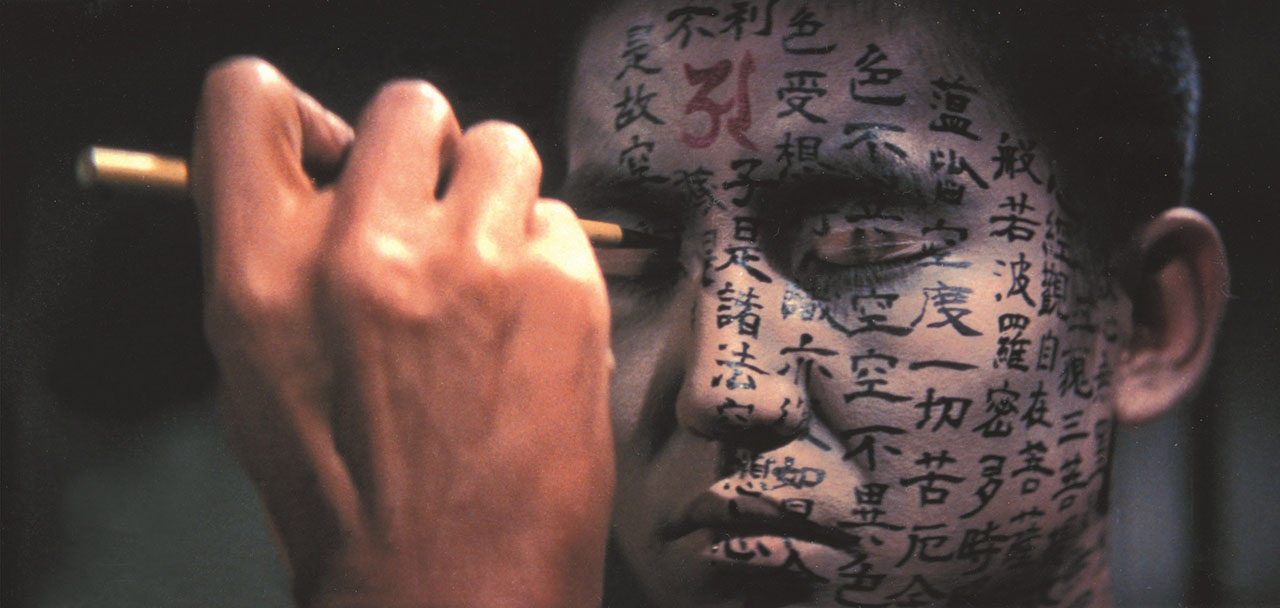
Kwaidan might be the least scary film on this list. But it's certainly haunting, and overall a magnificent piece of cinema. It's an anthology film that shrugs storytelling's rule of three. Director Masaki Kobayashi adapts four stories from Lafcadio Hearn's collection of Japanese folklore of the same name.
The first is Kurokami (Black Hair), the story of a poor samurai who leaves his devoted wife for a richer, more well-connected woman. And lives to regret it.
In Yuki Onna (Snow Woman), a young woodcutter witnesses a murder by the ghostly Yuki Onna. The spirit spares him on the condition he never tell a soul. Soon after he meets and falls in love with a woman who looks just like the ghost.
Miminashi Hōichi no Hanashi (The Story of Hōichi the Earless) is the highlight of the film and likely the reason it won an Academy Award. Hōichi is a blind biwa player, who is an expert in singing "The Tale of the Heike," a song about the battle of Dan-no-Ura. From this we get a story within a story, and the film takes time to show us the battle, an absolute visual treat. Hōichi's fame gets him called to play "The Tale of the Heike" for a royal family several nights in a row. However, his friends fear the people he is entertaining may not be people at all.
The final story is Chawan no Naka (In a Tea Bowl). It's the shortest of the four and tells of a writer who keeps seeing faces in cups of tea.
The stories aren't complicated. They're essentially folktales and campfire stories. A Japanese audience would know the endings of each story as soon as they started. So the appeal isn't in plot twists or surprise endings. Kwaidan is more about the experience, which is why the visuals are so impactful.
Roger Ebert said Kwaidan was among the most beautiful films he'd ever seen. And considering that guy had seen almost every movie made in his lifetime, that's a big compliment. The sets, costumes, and cinematography all work together like a symphony. Every shot is thick with atmosphere, which plays well with the slow pacing. You get so much time to sit in a scene and drink it in. The crowning achievement, as I mentioned before, is the battle sequence. The movie halts completely and goes on a tangent to show us the battle. Ordinarily, this is screenwriting death. But it's such a fantastic sequence, it doesn't matter.
My only critique is the final story. Far be it from me to question Kobayashi's vision, but Chawan no Naka feels out of place. I don't want to spoil the ending, but there's not much to spoil. After the perfect trio of stories prior, Kwaidan could end and not suffer. The fourth story doesn't detract, but it doesn't add anything either.
All in all, this isn't just a must-see horror film or a must-see Japanese film. It's a must-see film, period.
- Michael
Where to watch: Amazon
1. Onibaba (1964)

Horror is a fun genre. The only requirement is that the film be scary. This is usually achieved easily with cheap thrills, superfluous plots, and cheesy effects. By avoiding these (usually fun) horror tropes, Kaneto Shindo's Onibaba crafts a horror movie that drills into the core of our humanity.
Set in the 14th century, Onibaba centers around an old woman and her daughter-in-law (the same pairing as Shindo's other film Kuroneko). They make a meager living by murdering wayward soldiers and selling their armor, weapons, and possessions. Things get complicated when their neighbor returns from the war. He reveals that the old woman's son, whose return she had been awaiting, died in battle.
The three strike up a relationship and the neighbor joins in their murderous scheme. All goes well until the neighbor and daughter-in-law grow close. The old woman grows wary of their blooming relationship, as it jeopardizes her livelihood.
Doesn't sound like a horror movie, does it? For me, the most powerful and disturbing horror films are those that could actually happen. And Onibaba offers just that, albeit hundreds of years ago.
The horrors of life in war-torn Japan build Onibaba's foundation. Young men are forced to war while their families remain alone to fend for themselves. The threats of poverty and starvation compel otherwise civil people to commit unspeakable acts. Onibaba takes a real historical situation and steers it down a path of true horror. To what lengths will human beings go to survive?
Onibaba proves the idiom, "simple is best." The film gripped me from the start with its contrasting use of haunting silence and kinetic, pulsing drums. The plot is well-paced and tightly constructed, never skipping a beat. It has almost no special effects, but creates a terrifying atmosphere using a simple mask, impending storm, stirring facial expressions, and bloodcurdling sound effects. My imagination proved more potent than visual effects could ever be.
Raw and intense, Onibaba is both beautiful and revolting. Its simplicity and striking style have made it a timeless masterpiece, and it's more than worthy of the title of "Japan's Best Horror Film."
- Rich
Where to watch: Amazon
More Japanese Horror Movies
When compiling our Japanese horror movies list, we did a lot of research, comparison, and of course film watching. We picked the films that not only scared us, but also offered something insightful. Because that's what good movies do, horror or otherwise.
But new horror films are being made all the time. And undiscovered gems are becoming new classics. This list is tops according to Tofugu, but maybe you've got different favorites. Send us some words on:
And tell us your top Japanese horror movies. Have you seen any of the films on this list? Are there any hidden gems we're missing? Maybe we'll give them a watch and revise this list in the future.
Until then, get started with the ten films listed here. Then move ahead into the darkness.
